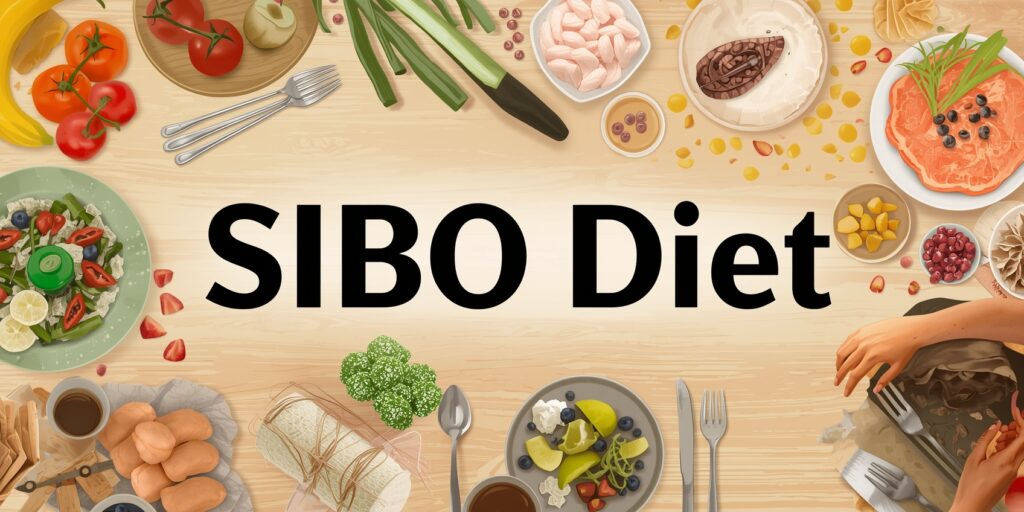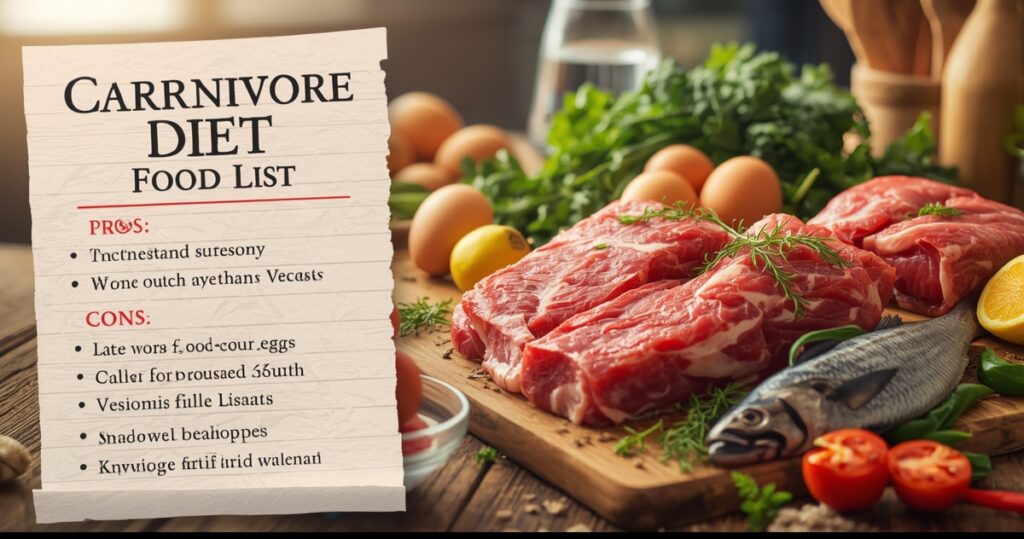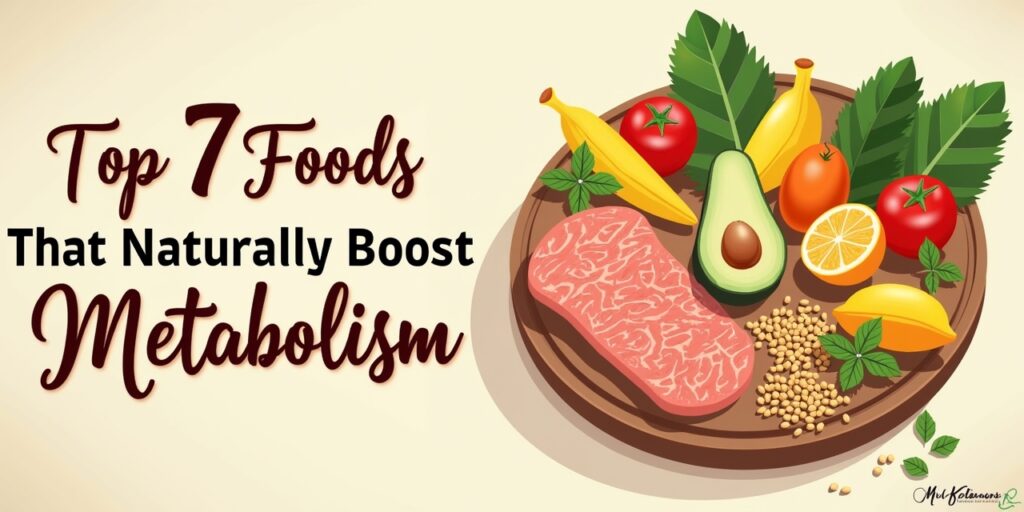SIBO (Small Intestinal Bacterial Overgrowth) can be a frustrating and painful condition that affects many people, causing symptoms like bloating, diarrhea, constipation, and even loss of appetite. While SIBO may seem complex, it is manageable through proper treatment, which often includes antibiotics and dietary changes. Although there is no official “SIBO diet,” certain foods can help alleviate symptoms, and avoiding certain triggers can improve gut health.

In this article, we explore the process of managing SIBO through a personalized diet plan, how to identify food triggers, and practical strategies for symptom relief.
What is Small Intestinal Bacterial Overgrowth (SIBO)?
SIBO occurs when there is an overgrowth of bacteria in the small intestine, disrupting the normal balance of gut bacteria. Normally, the small intestine has fewer bacteria compared to the large intestine. However, when bacteria accumulate in the small intestine, it can lead to digestive distress.
It’s important to note that SIBO is not caused by “bad bacteria” alone but by an imbalance of bacteria in the wrong place in the gut. This condition can lead to various symptoms, such as bloating, discomfort, and digestive irregularities.
Common Symptoms of SIBO
The symptoms of SIBO can mimic those of other gastrointestinal disorders, making diagnosis challenging. Common signs of SIBO include:
- Abdominal pain and bloating
- Constipation or diarrhea
- Feeling overly full after eating
- Excessive gas
- Loss of appetite
- Unintended weight loss
- Mood changes
Since these symptoms overlap with other conditions, it’s crucial to consult a healthcare provider for an accurate diagnosis. Research suggests that more than one-third of individuals with other digestive conditions may also have SIBO.
The SIBO Diet: Key Principles
While nutrition alone cannot cure SIBO, the foods you eat can play a significant role in managing symptoms. A common approach for managing SIBO involves eliminating certain food triggers through an elimination diet like the Low FODMAP diet. This diet focuses on reducing fermentable carbohydrates that may exacerbate gut discomfort.
Low FODMAP Diet for SIBO
FODMAPs are types of carbohydrates that are easily fermented by gut bacteria, potentially causing digestive distress. These include:
- Oligosaccharides (e.g., wheat, onions)
- Disaccharides (e.g., milk products)
- Monosaccharides (e.g., apples, honey)
- Polyols (e.g., stone fruits, mushrooms)
Read More: The Carnivore Diet Food List: Pros, Cons, and Possible Risks
While reducing FODMAP intake can help manage symptoms, it is important to follow the diet under the guidance of a registered dietitian (RD) to ensure nutritional balance and avoid unnecessary restrictions.
Foods to Include and Avoid
Managing SIBO involves avoiding foods that trigger symptoms and focusing on gut-friendly options. Some common triggers include:
- Apples
- Avocados
- Barley
- Brussels sprouts
- Cashews
- Processed meats
- Pasta
- Soybeans
- Watermelon
- Wheat bread
Instead, consider incorporating these gut-friendly foods:
- Almond milk
- Blueberries
- Green beans
- Lactose-free milk
- Oatmeal
- Oranges
- Rice
- Strawberries
- Tomatoes
- Walnuts
Other Dietary Approaches
The elemental diet is sometimes recommended for SIBO management. This diet involves liquid meals that provide pre-digested nutrients essential for the body. However, it can be challenging to tolerate and may not be socially acceptable. As an alternative, it’s generally recommended to first try an elimination diet and identify individual triggers.
Managing Gut Bacteria
Since SIBO involves an imbalance of gut bacteria, treatment focuses on reducing the overgrowth of bacteria rather than just rebalancing the microbiome. Key nutrients like Vitamin B12 and fiber can help support gut health.
- Vitamin B12: People with SIBO may be at risk of B12 deficiency, so it’s crucial to eat foods rich in B12, like fish, beef, and nutritional yeast, or supplement as needed.
- Fiber: Fiber is essential for gut health, and soluble fiber may help alleviate SIBO symptoms. Your dietitian can recommend the right type of fiber for your body.
Lifestyle and Management Tips
Along with dietary changes, certain lifestyle habits can help manage SIBO:
- Mindful Eating: Focus on eating without distractions, chew slowly, and listen to your body’s hunger and fullness cues.
- Food Diary: Keep track of your meals and symptoms to identify potential triggers.
- Hydration: Drink enough water, as staying hydrated is crucial for digestive health. Avoid sugary drinks and caffeine, which can exacerbate SIBO symptoms.
Recovery and Relief from SIBO
SIBO is typically treated with a combination of antibiotics and dietary changes. Antibiotics help reduce the overgrowth of bacteria, while dietary strategies like the Low FODMAP diet can help manage symptoms and prevent recurrence. It’s essential to work closely with your healthcare provider to develop a personalized treatment plan.
SIBO recovery is a long-term process that should be tailored to your individual needs, ensuring both medical and nutritional support for optimal gut health.
Conclusion
Small Intestinal Bacterial Overgrowth (SIBO) is a condition that can significantly impact your digestive health, causing symptoms like bloating, abdominal pain, and changes in bowel movements. While it can be challenging to manage, SIBO is highly treatable through a combination of antibiotics, personalized dietary strategies, and lifestyle adjustments.
The SIBO diet, particularly the Low FODMAP diet, plays a critical role in managing symptoms by reducing the intake of fermentable carbohydrates that trigger gut discomfort. However, diet alone is not a cure—SIBO treatment involves a comprehensive approach, including medical intervention, nutritional guidance, and mindful lifestyle practices.
It’s important to work with a healthcare provider, such as a registered dietitian or gastroenterologist, to develop a tailored treatment plan. With the right approach, SIBO symptoms can be managed, and gut health can be restored, leading to a better quality of life.
FAQs
1. What is SIBO?
Small Intestinal Bacterial Overgrowth (SIBO) occurs when there’s an overgrowth of bacteria in the small intestine. Normally, the large intestine has more bacteria than the small intestine. However, when bacteria migrate or grow in the small intestine, it disrupts digestion and causes symptoms like bloating, abdominal pain, and diarrhea.
2. How is SIBO diagnosed?
SIBO is diagnosed through a combination of symptoms, medical history, and diagnostic tests like a breath test. This test measures the hydrogen or methane produced by bacteria in the gut after consuming a sugar solution.
3. How does diet affect SIBO symptoms?
Diet plays a significant role in managing SIBO. Certain foods, particularly those high in fermentable carbohydrates (FODMAPs), can exacerbate symptoms. Following a Low FODMAP diet or eliminating specific triggers can help manage these symptoms by reducing the amount of fermentable material in the gut.
4. What foods can I eat on a SIBO diet?
Gut-friendly foods for those with SIBO include:
- Almond milk
- Blueberries and strawberries
- Rice, oatmeal, and gluten-free grains
- Tomatoes and carrots
- Walnuts and seeds
These foods are less likely to ferment and irritate the gut, helping to manage symptoms.
5. What is the Low FODMAP diet for SIBO?
The Low FODMAP diet involves reducing foods that are fermentable by gut bacteria. This includes specific carbohydrates like oligosaccharides, disaccharides, monosaccharides, and polyols. The goal of this diet is to reduce symptoms of bloating, gas, and discomfort in the gut. However, it is essential to follow the Low FODMAP diet under the supervision of a dietitian to ensure nutritional balance.
6. Can antibiotics cure SIBO?
Antibiotics can help treat SIBO by reducing the overgrowth of bacteria in the small intestine. However, antibiotics alone are not a long-term solution. It’s essential to combine antibiotic treatment with dietary adjustments, such as following the Low FODMAP diet, and making lifestyle changes to maintain gut health.
7. Are supplements helpful for managing SIBO?
Certain supplements may help manage SIBO symptoms. Vitamin B12, for instance, is essential because individuals with SIBO are at higher risk of deficiency. Fiber supplements can also promote healthy digestion and ease symptoms. However, supplements should be used under the guidance of a healthcare professional.
8. How long does it take to recover from SIBO?
SIBO recovery varies depending on the individual and the severity of the condition. Treatment typically includes antibiotics, dietary changes, and lifestyle modifications. It can take several weeks to months to see significant improvement. A comprehensive approach that includes medical treatment, dietary management, and lifestyle adjustments can help speed up recovery.
9. Can SIBO come back after treatment?
Yes, SIBO can relapse after treatment. To reduce the chances of recurrence, it’s important to continue following dietary guidelines, maintain a healthy gut microbiome, and address any underlying conditions that could contribute to the overgrowth of bacteria.




